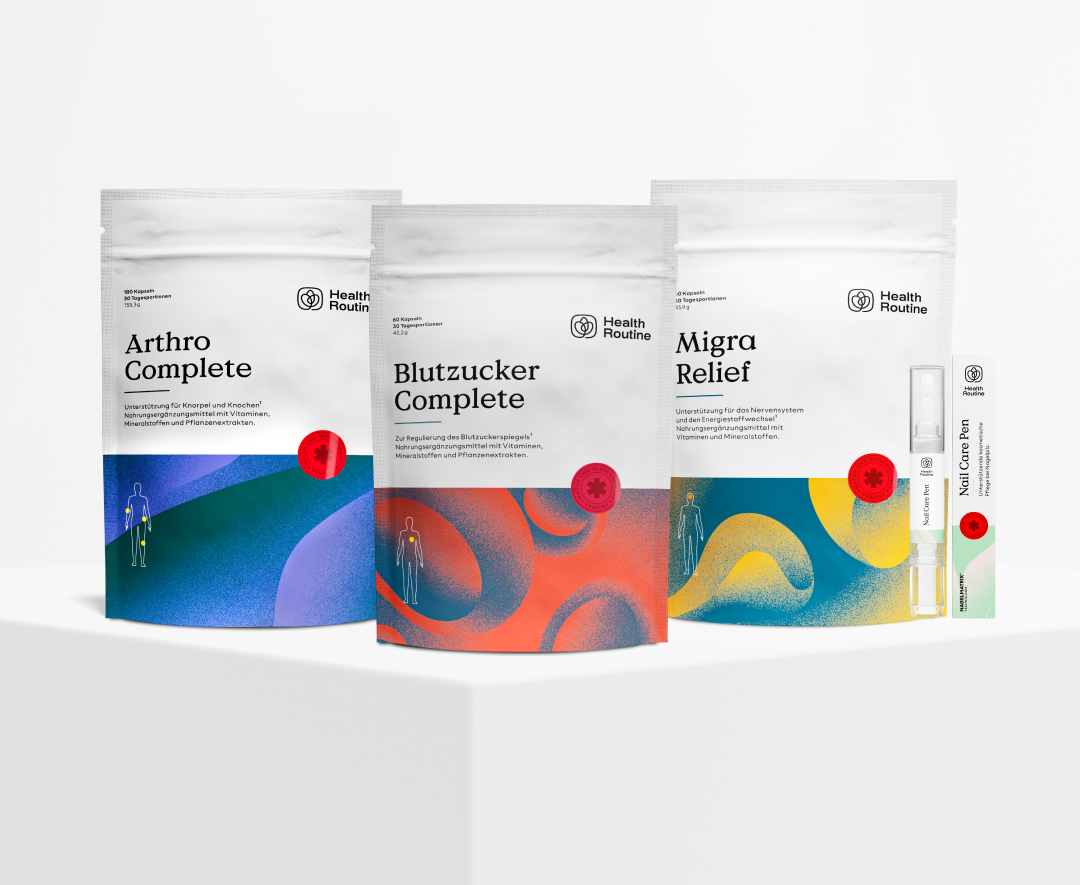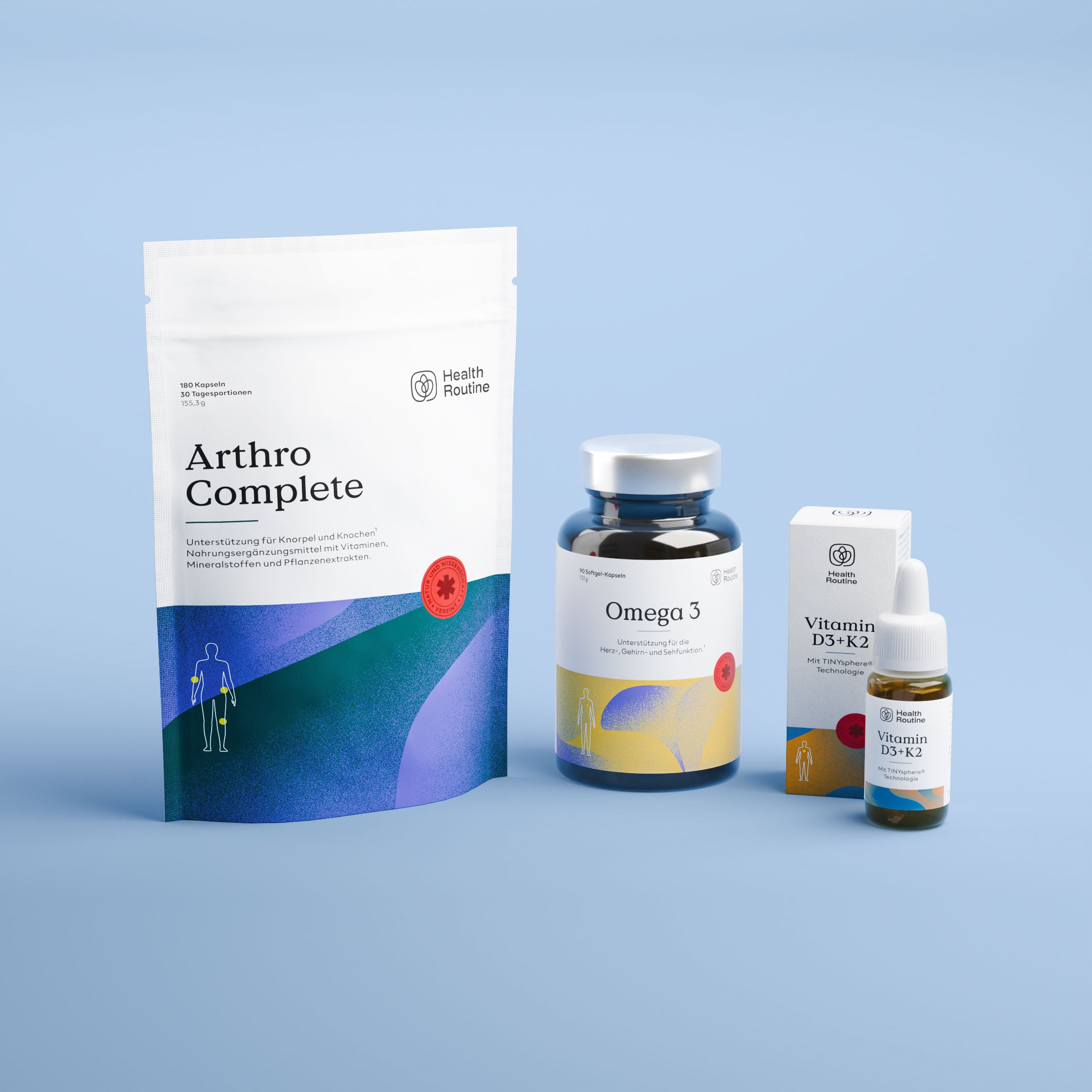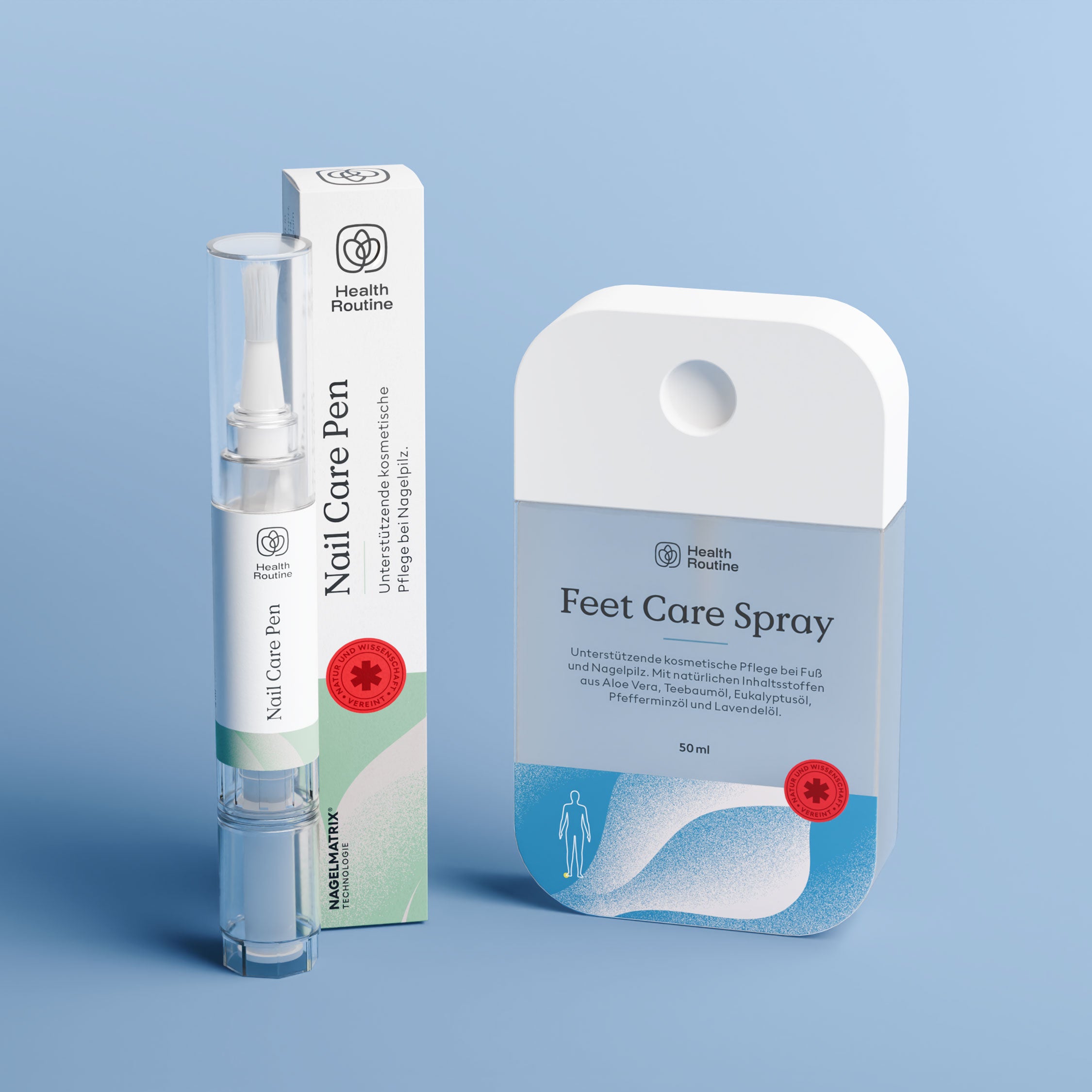The most important things at a glance
-
Cracks (rhagades) are tears in the skin of the feet – they can be painful and require targeted care.
-
Cracked feet are often caused by dry skin, pressure or external influences.
-
A consistent care routine with gentle cleansing, foot bath and moisturizing care helps to improve the skin's feel.
Cracked heels: A clear definition and explanation
Before we examine the causes of painful cracks in the heel and look for solutions , we should first ask ourselves: “What are cracks actually?” Because only if the problem is known can we initiate effective treatment .
Cracks are also called rhagades or fissures . These are tears in the sole of the foot . The size of the cracks varies . They can be a few millimeters across or even several centimeters.
Initially, cracks only affect the callus . However, if left untreated , they can penetrate deeper layers of the skin and lead to painful inflammation , often accompanied by bleeding .

All causes at a glance
Cracked feet can have a variety of causes . In addition to dry skin and inadequate care, the following can also be the cause:
-
Nutritional deficiencies and nutrient deficiencies: Your skin also needs to be optimally supplied with vitamins and minerals. A deficiency in vitamin A , omega 3 , and other nutrients often manifests itself in cracked heels.
-
Aging process: Over time, the skin increasingly loses elasticity and firmness. The aging process is often accompanied by a loss of moisture.
-
Incorrect care: Water that is too hot or the wrong care products destroy the skin's natural pH value.
-
Climatic conditions: Dry heating air in winter and long sunbathing sessions in summer: all of this takes its toll on your skin and can also lead to cracks in the heel.
-
Wrong footwear: Poorly fitting or inadequately ventilated shoes promote dry, cracked feet.
-
Metabolic diseases such as thyroid dysfunction and diabetes are often associated with a loss of moisture in the skin.
-
Athlete's foot: Dry feet are often the first symptoms of athlete's foot and nail fungus . However, they can also be caused by a bacterial infection .
- Even specialists often struggle to clearly distinguish eczema from psoriasis and neurodermatitis. All three skin conditions are associated with dry and flaky skin, which can also lead to cracked feet.
Which groups of people are particularly susceptible to rough and cracked feet?
Rough and cracked feet primarily affect people with dry skin . The risk increases with age as the skin loses elasticity.
People who spend a lot of time standing in their daily lives are also at risk of developing cracked feet. The constant pressure puts a lot of strain on the skin.
Expert advice: Skin diseases such as neurodermatitis and psoriasis are also often associated with cracked soles of the feet.
Pregnant women are also susceptible. Due to the changes in hormone levels, rough and cracked feet are more common during pregnancy.
These are typical symptoms & first signs
The first signs often appear before the cracks on the feet are visible. The feet feel rough on the balls of the feet and heels . Chafing and holes in socks may also occur.
As the condition progresses, scales and small cracks often form. If these penetrate deeper layers of the skin, pain increases.
Treating cracked feet – What really helps?
With the right treatment, cracked feet will quickly become a thing of the past. However, for cracked feet to heal, consistency and sustained care are required. The following components have proven particularly effective:
Wash and dry feet daily
Although it may sound paradoxical, dry feet should be washed daily . This deprives bacteria and fungi of their breeding ground.
Be sure to use a pH-neutral cleanser to avoid further drying out your skin . Speaking of "drying" – drying is just as important for cracked feet as daily washing.
In this article, you will learn how you can optimally care for your feet and thus sustainably treat cracked balls of the feet and heels.
Moisturize the skin
Cracked feet especially benefit from soothing moisture . With our innovative Feet Care Spray, you can now care for them effortlessly. Simply spray it on. Done.
The Feet Care Spray does the rest for you . With its caring and nourishing ingredients, it not only gives your feet
- an extra portion of moisture,
- but can also have a soothing effect on the skin.
Choosing the right socks and shoes
In order to treat and effectively prevent cracked heels , you should also pay attention to choosing suitable socks and shoes .
Expert tip: If possible, opt for socks made of skin-friendly cotton to avoid friction and create a pleasant foot climate . Your shoes should fit well and be breathable.
Why is washing your feet daily important?
Washing your feet daily plays a key role in preventing deep cracks on the heels and balls of your feet. Washing removes bacteria.
Otherwise, these could penetrate through microfine cracks into deeper layers of the skin and contribute to the spread of the fissures on the foot and trigger further inflammation.
A weekly foot bath is especially beneficial for dry feet , especially if you use Health Routine foot bath salts .
🌿 The purely natural ingredients can provide additional care for cracked feet and support the body's self-healing powers.
🌿 According to health experts, the sea salt it contains has antiseptic and anti-inflammatory properties.
🌿 The other ingredients in the balanced formula also give cracked feet an extra portion of care and thus contribute significantly to your well-being.
If you'd like to learn more about salt foot baths , we recommend our comprehensive guide. It contains valuable expert tips you absolutely should know.
Optimal care products: What you should pay attention to!
When choosing your skincare products, you should pay attention to the ingredients . Dry and cracked feet require professional care . Since the skin is already very dry and irritated, you should consistently avoid the use of chemical ingredients and alcohol .
Instead, natural formulations with moisturizing components have proven effective.
At Health Routine, we rely 100% on the best of nature and modern science. We use only natural ingredients proven effective in the care of cracked feet.
More expert tips for cracked feet
The following measures are also suitable for the prevention and care of cracked feet and fissures , all of which can be implemented without great effort:
-
Supply your body with nutrients . You can optimally care for cracked feet not only with creams and the like. You can also ensure velvety soft skin from within. Omega 3, in particular, contributes significantly to the well-being of your skin.
Scientific findings show that the fatty acids EPA & DHA are not only essential for the heart, brain and eyes, but also contribute significantly to skin health.
-
Only use pH-neutral cleansers and creams without perfume to avoid damaging the skin barrier.
-
When showering and bathing , pay attention to both the duration and the correct temperature . Body cleansing should last a maximum of 10 minutes and be done with water that's 38 degrees Celsius to avoid further drying out the skin.
-
Treat your feet to a nighttime cream mask . Use a rich moisturizing cream with urea. Apply it to the cracked heels or balls of the feet and leave it on overnight.
With cotton socks you can protect your bed linen from grease stains and ensure that the cream can work properly.
- Avoid high-heeled shoes . By shifting your weight, they can significantly contribute to the formation of cracks.
The importance of adequate care for your feet
Cracked feet and fissures can only be controlled with a good care routine .
- By washing daily,
- spraying with moisturizing Feet Care Spray
- and a weekly foot bath with regenerating Foot bath salts can prevent and successfully treat cracked feet and fissures.
Only then can you combat the real cause: dry skin. This is largely responsible for the development of the problem.
How to remove calluses effectively and regularly?
To effectively prevent cracked feet, thick layers of calloused skin should be removed regularly . Cracked calluses pave the way for cracked feet.
To do this, use a foot file or pumice stone after a soothing foot bath. For more tips and step-by-step instructions, see our guide: Removing Calluses
Check footwear
Cracked soles are often a sign of unsuitable shoes or an incorrect gait . Insoles may help prevent cracked heels and balls of the feet. It's best to discuss this with your family doctor.
These are the best shoes for cracked feet
The best shoes for cracked feet are those that fit you perfectly . They should be neither too small nor too big . This is the only way to avoid pressure points and chafing.
When purchasing shoes, be sure to look for a well-cushioned sole . This will absorb most of the impact and reduce pressure on the soles of your feet. Specialist stores often offer the best advice, as their staff is trained accordingly.
Which home remedies can help?
Even the medieval physician Paracelsus was convinced that "there is a herb for every illness." Modern naturopathy also recommends the following home remedies for the supportive treatment of cracked heels:
🌿 Olive oil
Dry feet in particular benefit from olive oil. With its balanced ratio of valuable omega-3 and omega-6 fatty acids, it can help keep the skin supple when applied externally.
🌿 Coconut oil
Coconut oil is considered antimicrobial and nourishing. Like olive oil, it moisturizes the skin externally and can also make life difficult for viruses, bacteria, and fungi.
🌿 Banana mask
Yes, you read that right. Thanks to their high nutrient content, bananas are considered a valuable home remedy for cracked feet. You'll need two bananas for this mask.
Mash them into a paste with a fork. Massage it into your cracked soles. Leave the paste on for about 20 minutes before rinsing it off with lukewarm water.
🌿 Paraffin wax
A special foot bath with paraffin wax is considered particularly soothing for cracked skin thanks to its pleasant warmth. It forms a kind of protective layer on the skin.
Special devices are available commercially that allow you to safely perform paraffin baths. The wax must not get too hot to avoid the risk of burns.
🌿 Milk and honey foot bath
Another tried-and-true home remedy for cracked heels is a milk and honey bath, which Cleopatra is said to have used. Legend has it that she even bathed her entire body in it. A milk and honey foot bath is said to have nourishing, caring, and antibacterial properties.
Conclusion
Cracked feet require special care. But this can often be incorporated into everyday life without much effort. By supplying your body with high-quality nutrients like Omega 3 from within , you're already laying an essential foundation.
Another important step is external care, such as a weekly foot bath with soothing foot bath salts and the daily use of nourishing Feet Care Spray .
With home remedies such as a banana mask or coconut oil, you can also make a valuable contribution to preventing the formation of cracked feet.
FAQ
Can cracked feet lead to infections?
Yes, cracked feet can lead to infections. Bacteria, fungi, and viruses can penetrate deeper layers of the skin through the cracks, causing serious health problems.
Are cracked feet a sign of other health problems?
In most cases, cracked feet are a sign of dry skin. However, in some cases, they can also indicate health problems such as diabetes, skin diseases, or other metabolic disorders.
🌿 Discover more guides from Health Routine now:
- Wellness for your feet » The best tips for relaxation
- Ingrown toenail » Causes & Treatments
- Psoriasis Nails: Signs, Treatment & Care
- Treating sweaty feet: All causes | 8 expert tips
Your medical advice
Our products are not intended to diagnose, treat, cure, or prevent any disease. The information provided in this article is for informational purposes only and is not intended as a substitute for advice from your physician or other healthcare professional.
Furthermore, our products are not a substitute for medications or other treatments prescribed by your doctor or healthcare provider. Regardless of the due care taken, no liability or warranty is assumed for the
- Accuracy,
- topicality,
- completeness
- and availability of the information provided.
No legal claims can be made for any damages potentially resulting from the use and application of this information. Liability claims of any kind are excluded.






